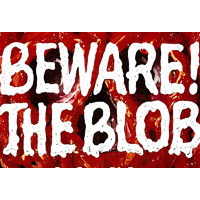Does the “Blob” Foretell the End of California's Drought or Nail the Coffin Shut?

Unlike the alien life in the 1958 movie “The Blob,” starring Steve McQueen, there is a bit of ambiguity about whether the 1,000-square-mile mass of warm water lurking off the California coast—named by scientists after the film—is an evil force.
The Blob has been on scientists’ radar screen since the fall of 2013. The circular water mass, around 100 yards deep, is, on average, around 5.5 degrees warmer than surrounding ocean. It warms the air blowing over it and headed inland, exacerbating shortfalls in precipitation. That means reduced snowpack and faster evaporation of rain.
The changed ocean conditions affect sea life patterns, reshaping ecosystems and redirecting migratory routes. But scientists don’t agree what caused it, are confused about its relationship to climate change and can’t say with any degree of certainty what its ultimate effects will be.
The CBS San Francisco headline about the blob said it “may be making California’s drought worse.” The London Daily Mail said it “could be causing California’s mega-drought." USA Today explained “how ‘the blob’ caused USA’s weird weather.” And CBS News asked, “Could the blob end California’s drought?”
The range of experts sampled across the media highlighted what probably appears to be one of the more interesting aspects of climatology—at least to the experts: There is an awful lot not known about the science.
Some have linked the blob to an El Niño-like pattern called the Pacific Decadal Oscillation (PDO), which shifts in sea surface temperatures during long cycles. The last time it shifted the way it is now, back in the 1970s, it was followed by a bunch of wet El Niño winters over two decades time.
Bill Patzert, a climatologist at JPL, and others see it as a possible precursor to the “pineapple express” storms that soak the state in some winters. “Whether it's this year or next, it's coming,” Patzert told NBC Los Angeles. He said it would be a “drought buster.”
He sounded a bit more subdued a month earlier on a NASA website when he said, “This sea surface height map is a ‘keep-your-fingers-crossed, there’s-some-hope’ image. That’s not a forecast, but there is a glimmer of hope.”
Why just a glimmer of hope? “El Niño is a temporary blessing or curse. El Niño can't cure an increasing water demand due to population and economic growth.”
Good point. Humans might have something to do with this whole drought thing and they’ve just started working on that. It takes time to change old habits, antiquated laws and societal priorities.
Dennis Hartmann, a University of Washington professor of atmospheric sciences, took a long view of the blob in a joint release from the American Geophysical Union (AGU).
“It’s an interesting question if that’s just natural variability happening or if there’s something changing about how the Pacific Ocean decadal variability behaves. I don’t think we know the answer. Maybe it will go away quickly and we won’t talk about it anymore, but if it persists for a third year, then we’ll know something really unusual is going on.”
–Ken Broder
To Learn More:
Climate Scientists See Evidence Drought Will End Next Winter (by Patrick Healy, NBC Southern California)
“Warm Blob” in Pacific Ocean Linked to Weird Weather Across the U.S. (American Geophysical Union)
Climate Change vs. the Blob (by Brian Palmer, onEarth)
Blob of Warm Pacific Water Threatens Ecosystem, May Intensify Drought (by Steve Almasy, Dave Hennen and Jennifer Gray, CNN)
Wedge of Warm Seawater Known as “The Blob” Blamed for Marine Havoc (by Monte Morin, Los Angeles Times)
80% Chance of 10-Year Drought in Southwest; 50% for a Megadrought (by Ken Broder, AllGov California)
- Top Stories
- Controversies
- Where is the Money Going?
- California and the Nation
- Appointments and Resignations
- Unusual News
- Latest News
- California Forbids U.S. Immigration Agents from Pretending to be Police
- California Lawmakers Urged to Strip “Self-Dealing” Tax Board of Its Duties
- Big Oil’s Grip on California
- Santa Cruz Police See Homeland Security Betrayal in Use of Gang Roundup as Cover for Immigration Raid
- Oil Companies Face Deadline to Stop Polluting California Groundwater





